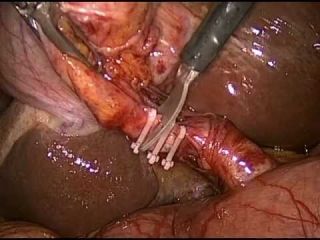Laparoscopic cholecystectomy is a minimally invasive surgical procedure used to remove the gallbladder. The procedure is commonly performed for the treatment of gallstones and other gallbladder-related conditions. In recent years, there has been a significant increase in the number of young people undergoing laparoscopic cholecystectomy, with the number of procedures quadrupling over the past two decades. In this essay, we will discuss the reasons behind this trend and its implications for healthcare.
Reasons for Increase in Young People Undergoing Laparoscopic Cholecystectomy:
- Obesity:
Obesity is a major risk factor for gallstones, which are the most common reason for laparoscopic cholecystectomy. The rise in obesity rates among young people has led to an increase in the incidence of gallstones, leading to more young people requiring the procedure.
- Poor Diet:
Poor diet, including high levels of fat and cholesterol, can also contribute to the development of gallstones. Young people are more likely to consume a poor diet, leading to an increase in the incidence of gallstones and the need for laparoscopic cholecystectomy.
- Increased Awareness and Diagnosis:
Increased awareness of gallbladder-related conditions and improved diagnostic techniques have led to more cases being diagnosed and treated with laparoscopic cholecystectomy.
- Improved Surgical Techniques:
Laparoscopic cholecystectomy has become the standard of care for gallbladder-related conditions, and improved surgical techniques have made the procedure safer and more effective. As a result, more young people are opting for laparoscopic cholecystectomy as a treatment option.
Implications for Healthcare:
The increase in young people undergoing laparoscopic cholecystectomy has significant implications for healthcare. While laparoscopic cholecystectomy is generally safe and effective, it is still a surgical procedure that carries risks, including bleeding, infection, and damage to surrounding organs. The increase in the number of procedures being performed on young people means that healthcare providers must be prepared to address the unique needs and concerns of this population.
Additionally, the increase in the number of procedures being performed on young people highlights the need for preventative measures to reduce the incidence of gallbladder-related conditions. This includes measures such as promoting healthy diet and exercise habits, as well as improving access to preventative healthcare services.
The increase in young people undergoing laparoscopic cholecystectomy is a trend that has significant implications for healthcare, particularly in terms of healthcare costs. The cost of laparoscopic cholecystectomy can vary depending on a number of factors, including the patient's age, overall health, and the severity of the condition being treated.
Younger patients may require additional preoperative testing, such as blood tests and imaging studies, which can increase the overall cost of the procedure. Additionally, younger patients may require longer hospital stays and more intensive postoperative care, leading to higher healthcare costs.
Moreover, the increase in the number of laparoscopic cholecystectomies being performed on young people highlights the need for more cost-effective treatment options. While laparoscopic cholecystectomy is generally safe and effective, it is still a surgical procedure that carries risks and requires a significant investment of healthcare resources.
One potential cost-effective alternative to laparoscopic cholecystectomy is the use of non-surgical treatments, such as medication and lifestyle changes. For example, some gallstones can be dissolved with medication, while others can be managed through dietary changes and increased physical activity.
However, non-surgical treatments may not be appropriate for all patients, particularly those with severe or chronic conditions. In these cases, laparoscopic cholecystectomy may still be the most appropriate treatment option, despite its higher cost.
To address the rising cost of laparoscopic cholecystectomy, healthcare providers may consider implementing measures to reduce the incidence of gallbladder-related conditions, such as promoting healthy lifestyle habits and improving access to preventative healthcare services.
Additionally, healthcare providers may explore alternative payment models, such as bundled payments or value-based payments, to incentivize more cost-effective care and reduce unnecessary healthcare spending.
Conclusion:
The increase in young people undergoing laparoscopic cholecystectomy has significant implications for healthcare costs. While laparoscopic cholecystectomy is generally safe and effective, it is still a surgical procedure that carries risks and requires a significant investment of healthcare resources.
Healthcare providers must be prepared to address the unique needs and concerns of young people undergoing laparoscopic cholecystectomy, while also implementing preventative measures to reduce the incidence of gallbladder-related conditions.
By exploring alternative payment models and promoting cost-effective treatments, healthcare providers can ensure that young people receive safe and effective care while also minimizing unnecessary healthcare spending.


